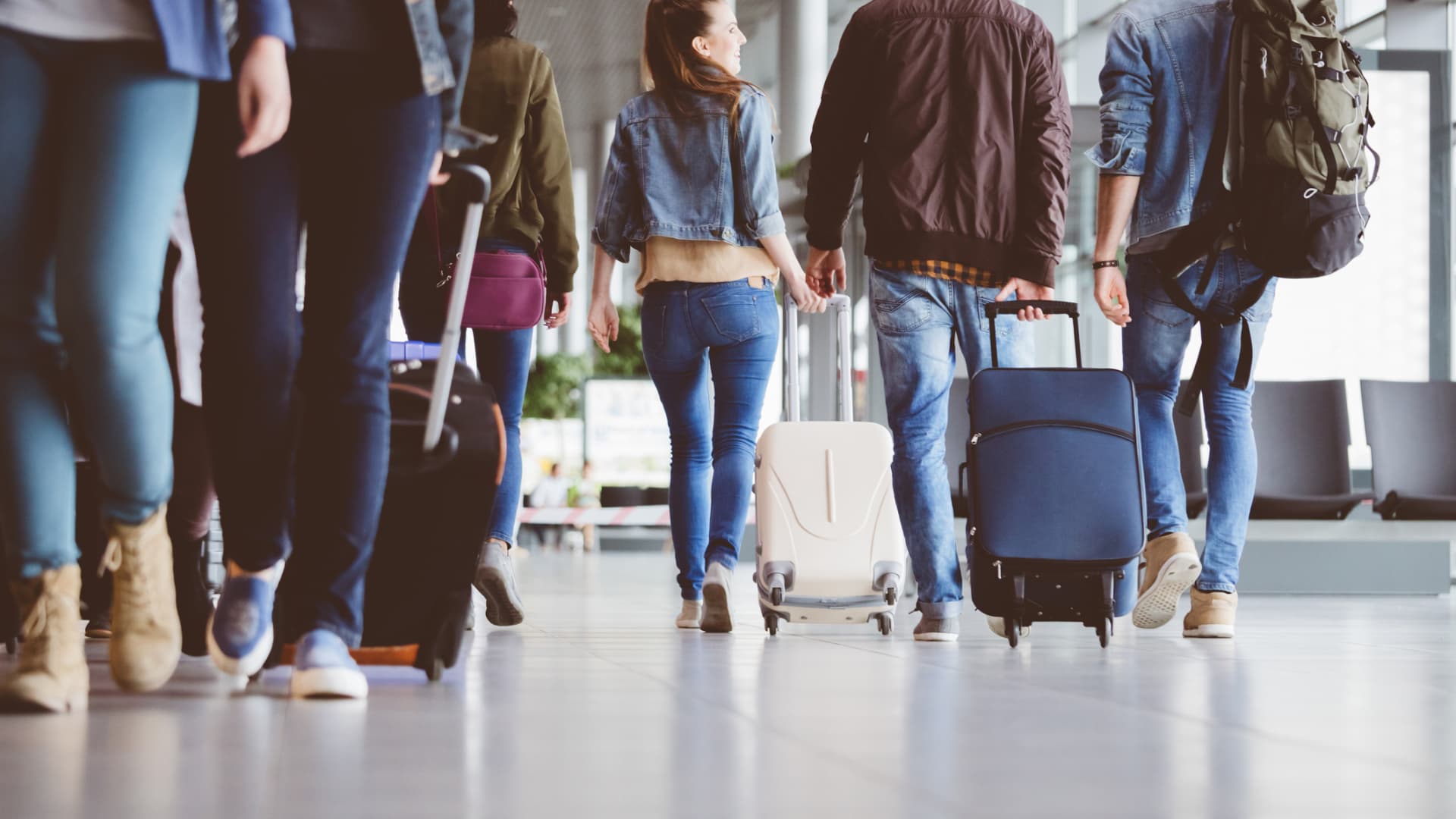The 2023 summer travel season is expected to be a busy one, making federal programs like TSA PreCheck especially helpful for fliers, according to experts.
Such programs carry fees but generally save travelers time at the airport. However, relatively long processing times — as with recent passport applications — mean it may be difficult for some new applicants to take advantage before traveling this summer.
“You have so many people wanting to travel now, especially after the pandemic,” said Sofia Markovich, a travel advisor and founder of Sofia’s Travel. “It’s just like passport renewal, where there have been these huge delays.”
That said, programs like TSA PreCheck and Global Entry are “definitely worth it” for frequent fliers, she added.
More from Personal Finance:
Travel costs fell in April. The dip may be short-lived
Missing one $2 expense could derail a whole national park trip
Travel to Europe is no longer a ‘ bargain-basement’ deal
“They make sense all year round, but especially when it’s the busy season,” Markovich said.
TSA PreCheck aims to cut down the screening time in airports. Travelers wait in a different — and often shorter — lines from the standard security line. In April, 94% of PreCheck passengers waited less than five minutes at the security checkpoint, according to the Transportation Security Administration.
The agency aims for wait times of 10 minutes or less with PreCheck, and 30 minutes for typical lanes.
TSA PreCheck — available for departures from certain U.S. airports — costs $78 for new enrollees. A membership lasts five years, and renewals cost $70.
The upfront fee for new members amounts to $15.60 a year. Several credit cards cover the fee as a customer perk.
Aside from a potentially shorter security line, there’s also a convenience factor, experts said.
Since the application entails a passenger risk assessment — including fingerprinting for a background check — members don’t have to remove their shoes, belts or light jackets when going through airport security. They can also keep electronics and “3-1-1″ compliant liquids in carry-on bags. (The 3-1-1 rule allows each passenger to carry one one-quart-sized bag’s worth of bottled liquids weighing no more than 3.4 ounces apiece in their hand luggage.)
“It’s pretty tough for most people to argue against that,” Sally French, a travel expert at NerdWallet, said of the fee. “It’ll alleviate so much stress down the road.”
PreCheck is one of a handful of Trusted Traveler Programs offered by the U.S. Department of Homeland Security in partnership with other federal agencies.
Among the other programs is Global Entry, which offers expedited U.S. customs screening when returning from a trip abroad. A five-year membership carries a $100 non-refundable fee and includes TSA PreCheck.
When the programs may not make sense
There are some instances in which the programs — and their fees — may not make sense for travelers, experts said.
The programs are most cost-effective for people who travel frequently, for example. The TSA recommends Global Entry for people who travel internationally four or more times a year.
TSA PreCheck also doesn’t guarantee that travelers will save time, experts said. The standard security line could be the shorter one, depending on the airport and departure time.
TSA PreCheck and Global Entry applications for first-timers may also be somewhat cumbersome, experts said. That’s largely due to the necessity of an in-person assessment. Appointments — especially those for Global Entry — aren’t always easy to get and may require an out-of-the-way visit (perhaps to an airport) to complete.
You have so many people wanting to travel now, especially after the pandemic.Sofia Markovichfounder of Sofia’s Travel
Global Entry application processing times can also take four to six months, according to the DHS. In 2022, the average time to enroll for Global Entry was 93 days, DHS said.
Longer wait times are due to a record number of applications for membership in the Trusted Traveler Programs, according to the DHS. Google search traffic for “TSA Precheck” is around its highest level in five years.
Most TSA PreCheck applicants must complete an online application, and get approved within three to five days of their in-person enrollment appointment, on average. However, it can take 60 days or longer, TSA said. (As of Feb. 1, U.S. Customs and Border Protection began releasing interview appointment slots for enrollment centers on the first Monday of every month by 9 a.m. local time, according to DHS.)
TSA PreCheck also isn’t available at all airports or airlines. It’s currently available at more than 200 airports and via more than 85 participating airlines, according to the TSA.
If a traveler’s home airport doesn’t have it — most likely to happen at a small regional airport — it may not be worth the time and expense, French said.
Travelers have another program option called CLEAR if they’re worried about not getting approved for TSA PreCheck in time for a trip, French said.
CLEAR, run by a private company and not a government-affiliated program, expedites the identity verification portion of the security screening by using a retina or fingerprint scan. (This differs from TSA PreCheck. CLEAR members must still remove shoes, belts, electronics during the physical screening process, unless they also have TSA PreCheck.)
A membership is more costly — $189 a year though discounts are available to certain travelers. Travelers can enroll at the airport, typically within a few minutes.
